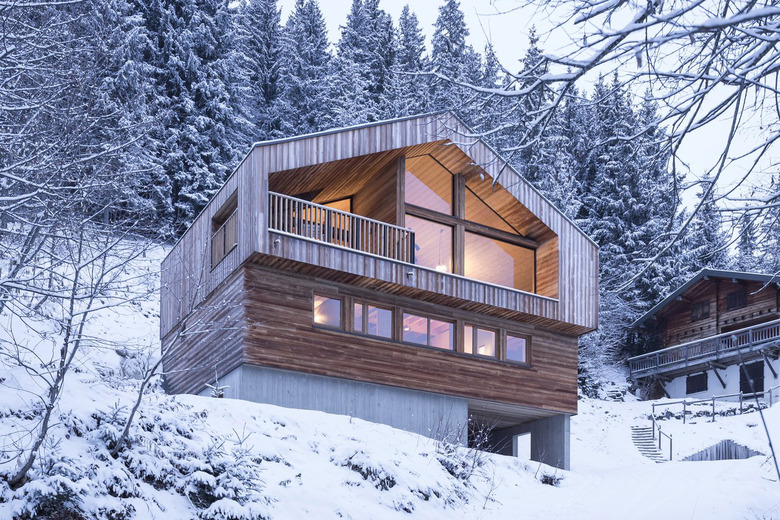Loud Banging Noise On My Roof When It's Cold
Awakening in the middle of a cold night by repeated loud banging from your home's roof can be quite alarming, giving rise to visions of falling tree limbs or intruders on the roof. What you're hearing, however, is the effect of low temperatures on the building materials. It's physics, but it is not an indication of a serious structural problem, so you sleep soundly, despite the racket.
Shrinking's the Issue
Shrinking's the Issue
Understanding the origin of a roof's banging requires an understanding of thermal expansion and contraction. Simply put, building materials respond to changes in their environment. The effects are most notable in the winter. In winter, cold temperatures shrink exposed building materials, which are bound to each other and interior materials by fasteners such as nails. Dissimilar materials shrink at different rates. Porous material, such as wood, loses moisture in dry winter air, making its shrinking more extensive. Extreme and fast shifts between warm and really cold temperatures — a common occurrence in winter when days are warmer with some shining sun but temperatures drop dramatically at night — makes exposed building materials shrink rapidly.
Distortion and Movement
Distortion and Movement
Additionally, roofs are exposed to cold outside temperatures, while attached interior walls, often wrapped in insulation, are warm from heat moving upward from the floors below. This contrast means the roof is shrinking, typically quickly, while the inside walls are not, which causes distortion in the shape of various roof and attic components, such as rafters. When pressure builds, joints and other areas of connections, such as nails and metal plates between the roof and attic walls, may move slightly, with one component or connection moving away from or toward another. The energy released by this movement is what causes the loud banging or cracking sound. Movement as little as a quarter of an inch can produce a bang, Joe Nelson, owner of Twin City Home Remodeling in Minneapolis-Saint Paul, says. When warmer, moister air returns in spring, the roof's components go back to their normal size and tension.
No Cause for Alarm
No Cause for Alarm
Although discomforting, noises associated with thermal expansion and contraction of building materials typically don't indicate a serious problem, such as structural damage. The same contraction and expansion happens in a less loud fashion when water pipes are heated or cooled with use, and to window and door frames when cooler evening temperatures roll in on summer days. In fact, builders understand thermal expansion and contraction, and try to eliminate its effect as much as possible by using compatible materials adjacent to each other and tightly securing connections to resist excessive movement. However, a roof piled with several inches or more of snow and making noise needs to be cleared off as soon as possible.
Insulation Not a Big Help
Insulation Not a Big Help
Insulation can baffle the banging sounds made by movement in the roof rafters or other roof components, but they will not be able to stop expansion and contraction due to the roof's exposure to the outside temperatures. Adding more attic ventilation could help minimize expansion and contraction by reducing the attic's daytime temperature, columnist Ari Marantz notes in his "Ask the Inspector" column in the "Winnipeg Free Press," but it's not likely to end banging entirely.
